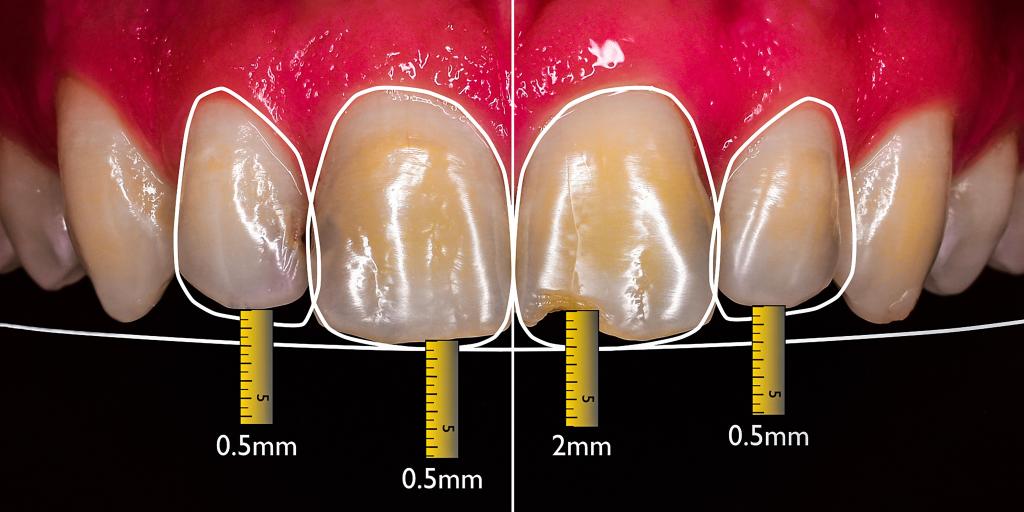
Smile Design

What is Smile Design?
Smile Design is a dentistry application that includes the arrangement of teeth and gums in terms of aesthetics. Today, aesthetic appearance is very important for many people in daily life. For this reason, smile design is a good alternative choice for people who want to eliminate some aesthetic deficiencies in their teeth.
Smile design begins with examining the size, shape, color and position of the teeth. In addition to these factors, the lip form, facial features and skin tone of the person are also taken into consideration. In digital smile design applications, the teeth and intraoral structures are scanned and personalized smile design is made in a three-dimensional environment.
What are Aesthetic Smile Design Applications?
- leaf porcelainis among the most permanent and robust alternatives.
- Zirconium smile aestheticsIf there are excessive losses in tooth structures, zirconium coating applications are preferred.
- Aesthetic dental fillings and bonding treatments can be used as a fast and economical solution.
- white dental fillings, It supports the function and form of the anterior and posterior teeth.
- Teeth whitening, It provides pre-design equalization when there are color and tone differences between teeth.
- pink aesthetic, These are gingival aesthetic applications that greatly affect the appearance of the teeth.
- white aesthetic, evaluation of the anterior teeth as a whole and a holistic approach to the problem with various treatment methods.
How to Smile Design?
The smile design process usually consists of more than one session. In the first place, a treatment plan is created based on the photographs and measurements taken. Then, using the mock-up technique, the teeth are rehearsed close to the original and, if necessary, gingival corrections are applied. After the necessary micro-abrasions are made, aesthetic veneers are adhered to the teeth.
The smile design process is a much more conservative dentistry practice than wearing the teeth with veneers. For this reason, people who are not aesthetically satisfied with their teeth can make significant progress in dental aesthetics thanks to the smile design.
If the appearance of your teeth is bothering you, you can consult your dentist for more ideas on smile design. Aesthetic dental treatments provide brighter, more aesthetic and healthier smiles.

Frequently Asked Questions About Smile Design
How much time is required for smile design?
It depends on the treatment needs. It is usually completed in a few sessions, but sometimes it can take longer.
How do those who have a smile design feel?
Since it is not an invasive procedure, pain is usually minimal. Since local anesthesia will be applied during the procedure, no discomfort is felt.
Which materials are preferred in smile design applications?
Aesthetic dental treatments such as porcelain laminates, bonding, composite laminates and teeth whitening can be applied.
How long should protection be provided after smile design?
Regular tooth brushing and high oral hygiene are necessary to protect teeth after aesthetic dental treatments. It is also recommended to use a mouth guard at night to protect the aesthetic coating or aesthetic fillings from fractures.
After what age can smile design be done?
There is no age limit for smile design. However, children's teeth are expected to be fully developed and the growth process to be completed.
How are smile design prices determined?
Aesthetic dentistry practices are generally more expensive than other procedures. However, smile design fees vary according to the preferred treatment method and the number of teeth to be treated.
Will my teeth be eroded during smile design?
Erosion of the teeth may be required in smile design applications, but it is often not preferred. Minimal abrasion techniques that protect tooth enamel are always preferred in aesthetic dental treatments.
For how many teeth is the smile design applied?
Depending on the aesthetic expectations, smile profile, tooth and enamel structure, anterior teeth require more applications. However, the entire set of teeth can be designed if desired.
How should teeth be cleaned after aesthetic dental procedures?
You can brush your teeth with the normal method. In addition to the toothbrush, regular use of dental floss and interdental brush is essential.
Will there be a restriction in the diet after the smile design?
It is recommended to avoid hot and cold foods for a few days after the procedure, depending on the possibility of sensitivity in the teeth. In addition, trying to cut the food with the front teeth after the smile design may cause the aesthetic applications to break or come out.
How long does the smile design last?
You need to do regular maintenance and go to checkups to protect your teeth, with or without aesthetic application. Even if oral hygiene is at a high level, aesthetic fillings or coatings made for smile design will need maintenance over time. Early diagnosis is important for the progression of the problems that will occur. For this reason, professional dental cleaning and dentist control every 6 months is recommended.
Do my teeth hurt after smile design?
There may be tenderness or pain in the first days after the procedure. This is normal and temporary. If necessary, you can use painkillers recommended by the dentist.
Does smile design provide permanent teeth whiteness?
Permanent whiteness in aesthetic teeth varies according to the material of the filling and coating used. In addition, the secret of long-lasting whiteness is high oral hygiene, regular teeth cleaning and avoiding coloring foods such as cigarettes and coffee.
Can I have the same function in my teeth after the smile design treatment?
Since smile design is a process to improve the aesthetics of your teeth, you can continue your daily activities as they are. However, it may be beneficial to avoid cutting action with the front teeth to maintain long-lasting durability. After the procedure, your dentist can give you specific recommendations.
Will the smile design look like a natural tooth?
Since smile design applications are planned individually, the natural appearance of the teeth is always preserved. is studied. Your dentist will create the most suitable treatment plan for you, taking into account the natural shape, size, color and other characteristics of your teeth. In addition, the materials used can be selected to be similar to natural tooth tissue. For the continuity of the natural tooth image, you should follow your doctor's recommendations and maintain oral care continuously.
What is pink aesthetics, how is gum aesthetics done?
Detailed gingival applications, called pink aesthetics, involve evaluating factors such as the shape, size, symmetry and color of the gingival line. If necessary, your dentist may recommend a treatment, such as gum surgery, to straighten the gum line.
Gingival enlargement negatively affects gingival aesthetics. Some people may experience a non-aesthetic condition called "gingival smile" as a result of overgrowth of their gums.
What is white dental aesthetics? What are the aesthetic evaluations considered for teeth?
Evaluation and arrangement of features such as form, shape, position, color and angle of teeth are called “White Teeth Aesthetics”. Many different treatment methods can be used to achieve white aesthetics. Processes such as laminate veneer coating (leaf porcelain), bonding, composite lamina, teeth whitening, inlay-onlay filling, smile design and recontouring are used for this purpose.
Porcelain laminates (Laminate Veneer) are specially produced thin and fragile veneers that are adhered to the front of the teeth. They are called leaf porcelain due to their very thin and delicate structure. Composite laminates are thin, specially made composite fillings applied to the front surface of the teeth. Aesthetic Bonding procedures are the reshaping of teeth with thin composite filling layers. Inlay-onlay applications are large volume and robust dental fillings produced by digital method. Recontouring is a procedure used to correct the shape and size of teeth.
To decide which of these methods to use, the dentist will evaluate the condition of your teeth and recommend the most suitable treatment options for you.
Is it necessary to cut and veneer teeth for Smile Design?
No, in aesthetic dental applications, the best aesthetics is always aimed with the least intervention to the natural tissue of the teeth. Cutting teeth and veneer is the last solution. Often the dentist recommends more conservative methods to improve the appearance of the teeth.
Composite bonding is one of these processes. In this method, a thin layer of composite resin is applied on the teeth and then bonded. This process is very successful in changing the color, shape and size of the teeth and can also be applied without losing tooth tissue.
However, porcelain veneers (leaf porcelain) can be used to improve the shape and size of the teeth. In this procedure, the dentist abrades some of the teeth, allowing the laminate veneer to be placed. However, this method is more invasive than other methods and requires more detailed processing.
Are smile design applications supported by SGK?
Cosmetic dental treatments applied for smile design are not included in insurance payments.
